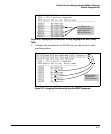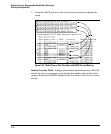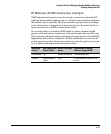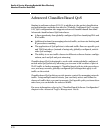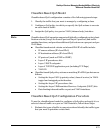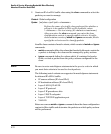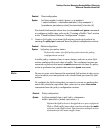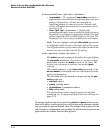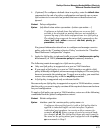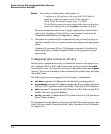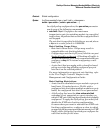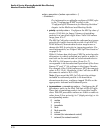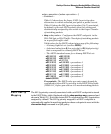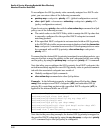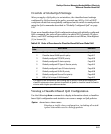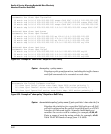
Quality of Service: Managing Bandwidth More Effectively
Advanced Classifier-Based QoS
4. (Optional) To configure a default class in a policy, enter the default-class
command at the end of a policy configuration and specify one or more
QoS actions to be executed on packets that are not matched and not
ignored.
Context: Policy configuration
Syntax: [no] default-class action <qos-action > [action <qos-action > ...]
Configures a default class that allows one or more QoS
actions to be executed on packets that are not matched or
ignored by any of the class configurations in a QoS policy.
The default-class supports the same QoS commands as the
class < ipv4 | ipv6 > action command: rate-limit, priority, ip-
precedence, and dscp.
For general information about how to configure and manage a service
policy, refer to the “Creating a Service Policy” section in the “Classifier-
Based Software Configuration” chapter.
5. Apply the QoS policy to inbound traffic on a port (interface service-policy
in command) or VLAN (vlan service-policy in command) interface.
The following restrictions apply to a QoS service policy:
■ Only one QoS policy is supported on a port or VLAN interface.
■ If you apply a QoS policy to a port or VLAN interface on which a QoS
policy is already configured, an error message is displayed. The new policy
does not overwrite the existing one. To apply a new policy, you must first
remove the existing policy with the no policy command.
■ A QoS policy is supported only on inbound traffic.
Because only one QoS policy is supported on a port or VLAN interface, ensure
that the policy you want to apply contains all the required classes and actions
for your configuration.
To apply a QoS policy on a port or VLAN interface, enter one of the following
commands from the global configuration context.
Context: Global configuration
Syntax: interface <port-list > service-policy <policy-name > in
Configures the specified port(s) with a QoS policy that is
applied to inbound traffic on each interface. Separate
individual port numbers in a series with a comma; for
example, a1, b4, d3. Enter a range of ports by using a dash;
for example, a1-a5. The QoS policy name you enter must be
the same as the policy name you configured with the policy
qos command in Step 2.
6-75



